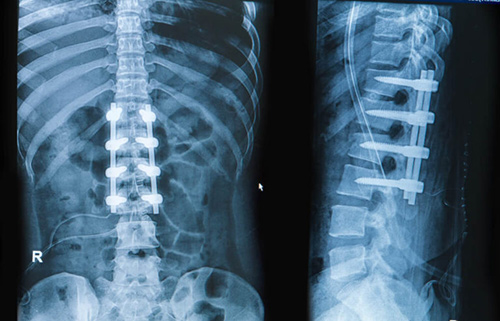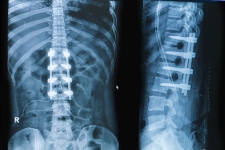
What is Spinal Fusion?
Spinal fusion mimics the bone healing process and immobilizes that area of the spine by connecting two or more bones. This surgery is not just limited to the spine, as it is done on other areas of the body, such as the feet or ankles – with that said, fusion is quite common in regards to the spine.
So, how does it work? Well, the spine is fused via bone grafts. Like a skin graft, bone tissue is taken from another bone in the patient’s body (autograft), or supplied by a donor or bone bank (allograft), and placed around the vertebrae in need of the fusion. Autografts are considered to be the best type of bone graft, as the healing is more predictable. Most autografts are taken from the patient’s pelvis bones.
After surgery, the damaged vertebrae and bone grafts will fuse together and solidify to essentially become one bone.
Why they do it
There are a number of reasons for spinal fusion surgery; here are some of the most common:
Broken vertebrae: Broken vertebrae can heal without spinal fusion, but fusion becomes necessary when the broken vertebrae cause instability.
Spinal weakness or chronic pain: This is common with arthritis sufferers, as degeneration of the spine can cause instability. A spinal fusion brings some stability back to the damaged spine. Spinal fusions are a bit controversial for chronic or nagging pain, as sometimes the direct source of the pain cannot be identified.
Deformities and disorders: Diseases such as spinal stenosis, scoliosis or spondylolisthesis can be used to provide stability and ease pain.
Herniated disk: If damaged enough, a herniated disk is removed entirely and the connecting vertebrae are fused together. In this case, surgeons will often “recycle” the herniated disk – which is called a local bone graft – and use it as the bone graft that fuses the vertebrae together.
The Steps
A surgeon will give their patient and list of procedures to do leading up to the surgery, many of which are routine for most surgeries (i.e. fast for 8 hours, stop medications if necessary, wear loose clothing). Plan for the few days ahead following the surgery, as most spinal fusions are inpatient procedures. Many times the physician will order pre-operative Physical Therapy to allow the patient to gain strength in preparation for their procedure.
After placing the patient under general anesthesia, the orthopaedic surgeon will perform a number of steps during the surgery, including:
Incision: Depending on the location of the damaged vertebrae, the surgeon will make an incision through the front of the neck or abdomen (anterior), the back (posterior), the side (lateral), or in a combination of these angles.
Bone graft: If the surgeon chooses to use an autograft, another incision will be made to retrieve the bone graft, usually from the pelvis. It’s common for patients to experience some pain in the region after the surgery.
Fusion: Once the bone graft is harvested, the surgeon will place it between the damaged vertebrae. Sometimes metal plates, rods, or screws will be used to hold the graft in place.
In addition, a synthetic substance may be used instead of a bone graft to help promote bone growth and speed up the healing process.
Demineralized bone matrices (DBM): Calcium is removed from a cadaver bone to turn the cadaver bone into a gel-like substance. DBMs are often used with other bone grafts to promote healing.
Bone morphogenetic proteins (BMP): These are FDA-approved synthetic bone-forming proteins and can be used without grafts.
Synthetic bone: Often called ceramics, synthetic bone grafts are made by calcium and phosphate and look similar to autografts.
Life After Fusion
Patients should generally expect to remain in the hospital for two or three days following the surgery. In addition, patients will typically be expected to wear a brace when returning home to limit their mobility as the bone graft fuses, which will take several months to fully solidify. Since the fused bones solidify into one, mobility will be permanently altered, but the pain experienced prior to surgery should decrease tremendously.
A key part of the recovery following a spine fusion can be Physical Therapy to assist patients with education of transfers (rolling in bed and sitting up), daily household tasks that require protective movement, and strengthening to help build their core back up. The Physical Therapists at Prairie Orthopaedic & Plastic Surgery will work closely with you and your surgeon to determine the best course of care that will get you back on your feet and feeling good as quickly as possible.

